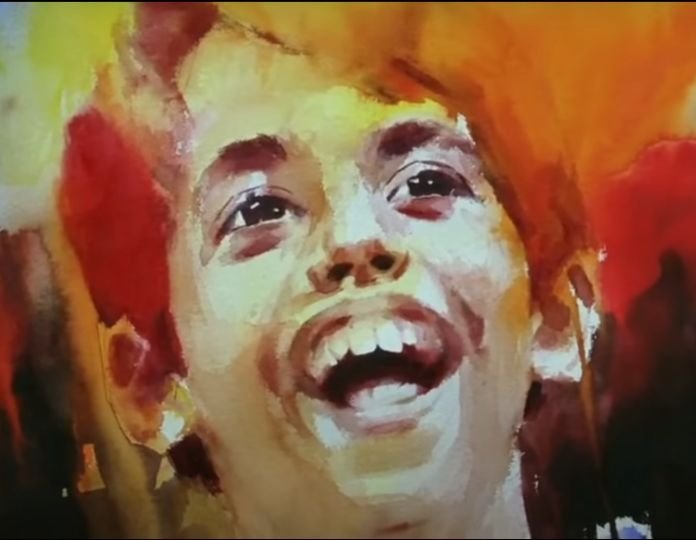“Aur phir, art class mein bache apne jazbaat nahi dikhayenge toh kahan dikhayenge?” Taare Zameen Par has been celebrated as a deeply impactful movie in helping bring learning disabilities and challenges it brings to light for the general public. It has helped in busting the burdening stigma around children with learning disabilities. Furthermore, something that goes unmentioned when recounting the positive effects of the movie is its brilliant use of play therapy in action and the role teachers can play in it.

Play therapy is officially defined as the therapeutic use of the power of play, which happens to be a child’s inherent way of expressing, understanding and treating children dealing with psychological struggles. Children play in their preferred way and eventually begin revealing themselves through this to the therapist. It helps a therapist uncover a child’s true feelings without direct questioning of and revelation of the child. We will illustrate the process of play therapy through the use of Taare Zameen Par. But first, let us understand the challenges dealt by the protagonist, Ishaan Awasthi.
Neurodivergence of Ishaan Awasthi
In the movie, Ishaan Awasthi is an 8-year-old boy who struggles with reading and writing which invites a lot of criticism from his teachers, peers and his family. Everyone around Ishaan calls him various names such as idiot, duffer, stupid and so on. They constantly put him down for his inability to comprehend and process things like other ‘normal’ children. Ishaan is neurodivergent which essentially means that his way of processing and perceiving information is different from the majority which we mostly deem as ‘normal’. He is dyslexic which is a form of neurodivergence. Let us see what characterises his neurodivergence.
- Emotional dysregulation: Throughout the movie, Ishaan can be seen as having disproportionate or inappropriate emotional reactions. For example, jumping to fighting whenever a threat is perceived. He also has a lot of outbursts of anger and frustration whenever he is denied anything which makes him take aggressive stances.
Related: 8 Tips to Control Anger in Children
- Lack of Awareness of Social Norms: Ishaan fails to function according to societal norms which further pushes him into the box of an outcast. Glaring at elders, talking back, laughing in serious situations and so on are considered to be unacceptable and inappropriate in our culture. Ishaan faces difficulties in understanding such social boundaries which gets him into trouble. This also appears in him not being able to perceive time.
Read More: 11 Effective Methods to Teach Children Good Habits
- Inability To ‘Fit In’ With Peers: Ishaan can rarely be seen as having friends (he gets close to Raja in the second half of the movie) at least in the beginning of the movie. Moreover, he tends to be around animals such as dogs and fish, perhaps because he does not have to explain himself to them. He is also bullied (physically and verbally) throughout the movie simply because he is different.
- Inability to formulate/express thoughts. Due to his different processing, he finds it difficult to express his emotions and thoughts. This can be seen whenever he attempts to answer in class or explain his reasoning to his parents. When this gets overwhelming, he either starts blabbering or keeps repeating the same thing. This may also result due to his intrusive thoughts and the inability to hang onto a singular train of thought.
- Dyslexia. Research done by the Dyslexic Association Of India has indicated that 15-20% of Indians have dyslexia. An analysis of this movie has asserted that Ishaan depicted 31 out of 37 symptoms of dyslexia. Dyslexia is a learning disability that affects a person’s ability to read, write or spell. They face difficulty comprehending the semantics and bonds between words and phrases. Ishaan does say multiple times that the letters or alphabets were dancing but this only brought him ridicule rather than concern. This also results in him not understanding what situations could be risky, he has lowered risk perception which can be dangerous such as when he bunked school and was roaming on the roads and got very close to being hit by a vehicle.
The Cost Of Unacceptability
Ishaan’s biggest challenge is not his learning disability but the people around him who are not aware of the challenges he is facing and barely give him the benefit of the doubt. He is constantly mocked and put down by all those around him. This results in lowered self-esteem, lesser confidence and increases deviant acts. The stigma that surrounded a learning disability constantly painted him as a ‘retard’, ‘duffer, and simply, ‘lazy’.
When he is sent to the hostel and is unable to cope with the rigidity of the place, he begins losing himself. He exhibits symptoms of depression such as lack of appetite, disturbed sleep schedule, night terrors, feelings of loneliness and helplessness and so on. Most importantly, as Aamir Khan’s character, Nikumbh, points out Ishaan’s primary way of expressing was through art which he had stopped indulging in, deeming it pointless as others pointed out to him.
Stages In Play Therapy
Play therapy, like any therapeutic process, takes place in various stages. While it is usually carried out by a professional therapist, particularly a child psychologist, here, it was carried out by Ram Shankar Nikumbh, a young art teacher who happened to get employed at Ishaan’s boarding school. Nikumh luckily was earlier teaching at a school for special children which helped him identify Ishaan’s struggles which is what most people in his life had failed to do. From here on, he began the therapeutic process.
Initiation:
This phase involves the child bonding with the therapist which would help him accept therapy as a safe space and would help him open up. Nikumbh had prior experience in play therapy and thus, encouraged kids to be true to their expression and imagination. He recognises difficulties faced by Ishaan, and notices his despondent and frightened state.

He then attempts to trace his history in academia and notices patterns. He analyses that Ishaan’s biggest hurdle comes when he tries to read or write but that the child has potential. Then Nikumbh helps Ishaan see subtly that his learning difficulties don’t have to be a burden, but rather could be a benefit which helps Ishaan feel closer to Nikumbh and not necessarily see him as a threat.
Resistance:
As the child newly enters play therapy, he is bound to show some resistance towards the process to avoid an uncomfortable exploration. Ishaan begins exploring his creativity again by fashioning a boat out of waste he has collected, Nikumbh provides positive feedback which helps Ishaan gain a bit of confidence back but Ishaan leaves before anyone can know it was his and prevents further connection with Nikumbh. This also helps him avoid any revelations he would have come across due to this.
Work:
This is where the child embraces the process and begins truly investing in it. Nikumbh analyses prior works of Ishaan. Then, he begins attempting to teach Ishaan in the medium he will understand (paints, colours, sensations and games). Teaching how to write letters in sand while associating sounds with it. Then using paints to ease the senses and breed familiarity as he gets reacquainted with language. Nikumbh tries breaking down such concepts so that it is less threatening and easier to digest.

Ishaan’s natural medium of expression is art. Nikumbh utilises this by giving special time to Ishaan and helping him learn through painting. The different colours and sensations help keep Ishaan’s mind engaged and slowly and steadily, he begins learning and coping with studies. Due to this process, Ishaan begins to understand that he was never an idiot or just lazy, he simply needed time and someone who was aware about his situation. He begins embracing his creativity and imagination once more and feels better equipped with life skills as well.
One of the most noteworthy events in this process was Nikumbh discovering Ishaan’s flip book which shows Ishaan being separated from his family. This helps Nikumbh understand more deeply the isolation faced by Ishaan. (The very first image in the article)
Termination
This is a very important stage in all forms of therapy. After the therapeutic process is over, the child must learn to confront his struggles on his own and part ways with the therapist. This can be an exceptionally difficult stage for most. At the end of the movie, as Ishaan’s parents thank Nikumbh for his efforts, we see a much happier and open Ishaan. Then as they are about to leave, Ishaan runs back to Nikumbh and they share an embrace which has become the iconic ending point of the movie.
Importance of Awareness and Acceptance
Nikumbh once told Ishaan’s father, who had constantly demeaned Ishaan and was verbally and physically abusive towards him, that small expressions of affection are not enough to help your child through life; rather one should provide their child with understanding and acceptance. This film has had major implications on the viewers since it has brought to attention various aspects of learning disabilities.
- Requirement for play therapy: Play therapy as depicted in the movie can produce fruitful results which highlights its importance not just in a clinical setting but also in educational settings. It can be a very helpful tool considering the universality of play for children thus minimising cultural bias.
- Need for awareness in educational institutions: Except for Nikumbh, every other teacher Ishaan had was not very accommodating of his struggles. They constantly punished him and ridiculed him for not following the rules, sitting still, making mistakes and so on. They attributed his failures to his ‘attitude’ and ‘laziness’. A child’s schooling has a lot of impact on the personality and identity of a child. Thus, people working in educational institutions should be made aware of all such difficulties so that they can foster a more positive environment for the children.
- Educational Reforms for Neurodivergence: Nikumbh tried his best to inform people that Ishaan’s brain was simply different, not defective. There is a severe need for educational reforms to accommodate neurodivergent students. For example, in most Western countries now, students with ADHD are given extra time to finish their examinations. Institutions have permitted the use of fidget toys in class which helps students pay attention.
- The Role Of Punishment In Schooling: While the government has been trying to put a stop to physical punishment in schools, it has not completely disappeared. Cursing at children, and demeaning them in front of the class takes a dire toll on the child’s mental and psychological health. The old art teacher at Ishaan’s boarding school used to bring rigidity to art classes by telling children to draw shapes rather than indulge their creativity, the price of which was getting hit by a scale. Such punishments only breed further hostility in the child and do not help anyone as such.
Taare Zameen Par has been an eye-opening film that has helped many gain awareness or begin educating themselves on matters like these. However, there is still a lot of stigma assigned to people dealing with such difficulties which can only be combated by collective effort and understanding.

References +
- Hicks, B. (2017, February 23). Phases of Treatment in play Therapy – Brenna Hicks, PhD, LMHC. Brenna Hicks, PhD, LMHC. https://www.brennahicks.com/2017/02/phases-treatment-play-therapy/
- Senko K, Bethany H. PLAY THERAPY: An Illustrative Case. Innov Clin Neurosci. 2019 May 1;16(5-6):38-40. PMID: 31440400; PMCID: PMC6659989. https://pubmed.ncbi.nlm.nih.gov/31440400/
- Sharma, G. (2020, September 18). DYSLEXIA; MOVIE ANALYSIS OF TAARE ZAMEEN PAR : ISHAN AWASTHI. Budding Psychologists. https://buddingpsychologists.org/dyslexia-movie-analysis-of-taare-zameen-par-ishan-awa sthi/#google_vignette
- Κουκουρίκος, Κ., Tsaloglidou, A., Tzeha, L., Iliadis, C., Frantzana, A., Katsimbeli, A., & Kourkouta, L. (2021). An overview of play therapy. Materia Socio-medica, 33(4), 293. https://doi.org/10.5455/msm.2021.33.293-297
- Sunil, A. B., Banerjee, A., Divya, M., Rathod, H., Patel, J., & Gupta, M. (2023). Dyslexia: An invisible disability or different ability. Industrial Psychiatry Journal, 32(Suppl 1), S72–S75. https://doi.org/10.4103/ipj.ipj_196_23













Leave feedback about this